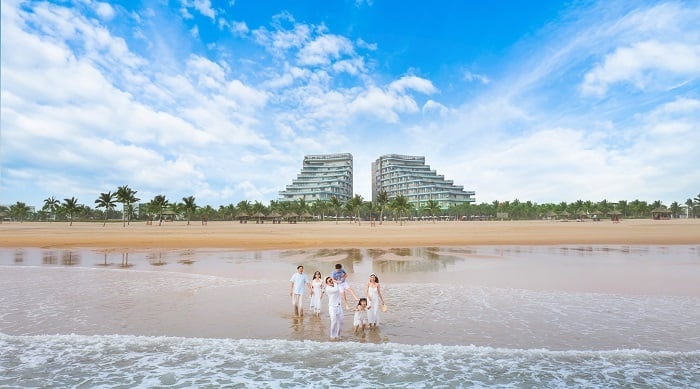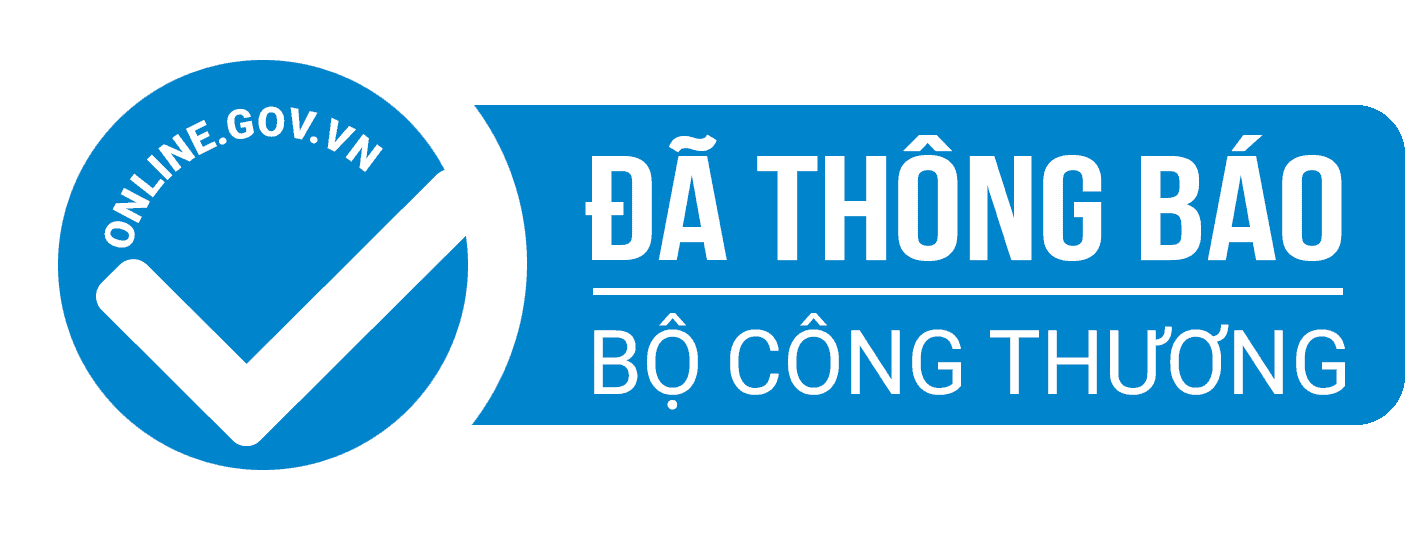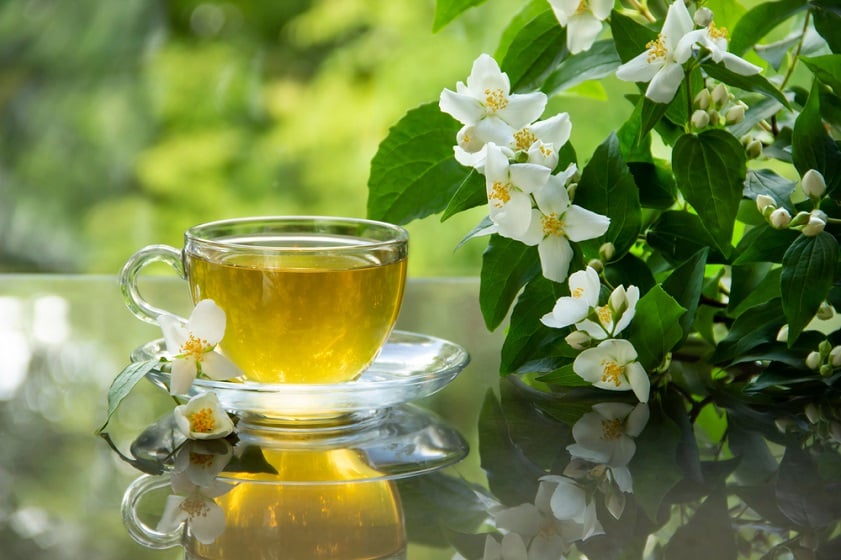
Indulge in the exquisite taste of Vietnamese jasmine tea during your Vietnam travel, a true embodiment of the country's centuries-old tea culture - one of the most long-standing Vietnamese cultures. Renowned for its fragrant blend of green tea and jasmine flowers, this Vietnamese tea captivates tea enthusiasts, offering a delightful cultural experience that no visitor can miss through every sip.
1. An overview of Vietnamese jasmine tea
Let's explore some information about the history, flavor, and benefits of jasmine tea - a popular tea variety in Vietnam.
1.1. Origin and features of Vietnamese jasmine tea
"Tra lai" is the name for jasmine tea in Vietnamese, a long-standing aromatic tea. It is made using green tea as the base and infused with jasmine flowers through various stages to create a tea that is both fragrant and offers numerous health benefits. Jasmine tea has its origins in Guangdong, China, a country with a rich tea culture, at the end of the Song Dynasty (960–1279). Subsequently, the practice of infusing jasmine tea spread to various places, including Vietnam. The tradition of infusing jasmine scent into tea in Vietnam is believed to have originated in Hue. Vietnam jasmine tea has been present for a long time and remains the most popular flower-scented tea in Vietnam to this day.
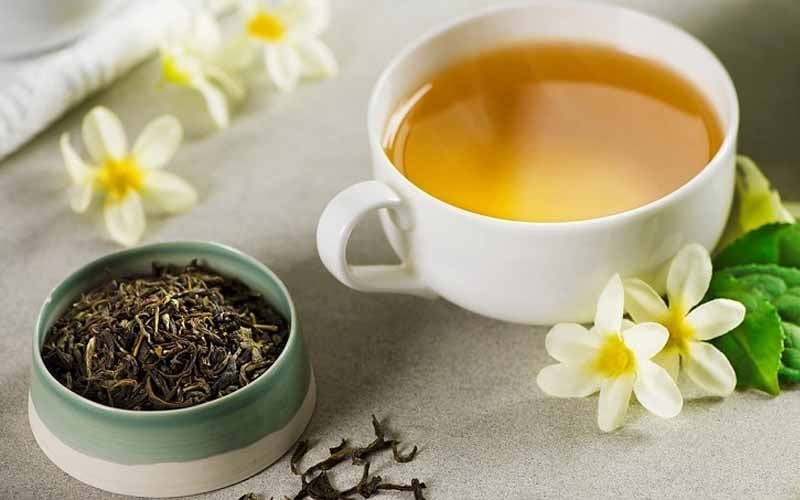
What does jasmine tea smell like? As for the scent of jasmine tea, a delicious jasmine tea is characterized by a gentle, pure aroma of jasmine flowers, combined with the smooth and mild flavor of the tea. This combination creates a unique and refined tea-drinking experience. When brewed, tra lai has a bright and translucent yellow color. The initial flavor profile presents a subtle bitterness on the tip of the tongue, followed by a honey-like sweetness that lingers in the mouth, ultimately ending with a refreshing finish.
1.2. Health benefits of Vietnamese jasmine tea
Many people wonder, "What is jasmine tea good for?" Here are six benefits of consuming jasmine tea moderately:
- Reducing the risk of certain cancers and heart diseases: Thanks to the polyphenols acting as antioxidants in the body.
- Supporting weight loss: By increasing metabolic rate, it can burn an additional 70–100 calories per day.
- Enhancing oral health: The active ingredients help eliminate bacteria, fight against tooth decay, and freshen your breath.
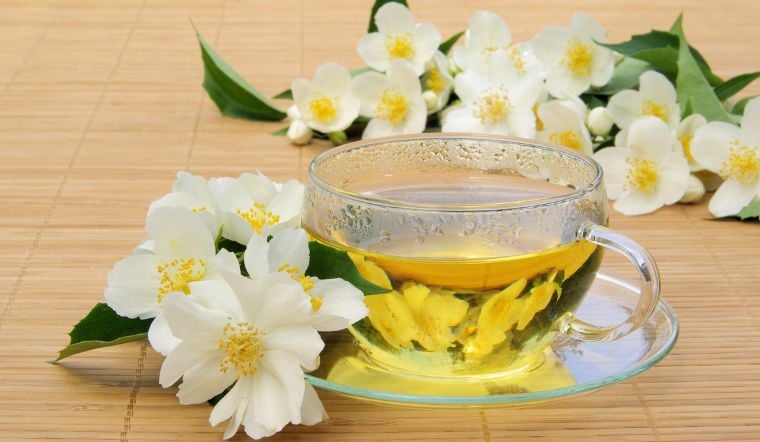
- Boosting brain function, promoting alertness, and improving mood: This is due to caffeine and active compounds like dopamine and serotonin.
- Preventing Alzheimer's and Parkinson's diseases: With a high level of EGCG, it can inhibit inflammation and free radicals—two key factors related to these diseases.
- Reducing the risk of diabetes: The active compounds help the body use insulin more effectively and lower blood sugar levels.
1.3. Popular types of Vietnamese jasmine tea
In the current Vietnam jasmine tea market, there are three types of delicious and high-quality jasmine teas:
- Thai Nguyen jasmine tea: Originating from Tan Cuong, Thai Nguyen, this tea has a clear green color and a mildly astringent taste blended with a deep sweetness.
- Oolong jasmine tea: This tea offers a subtly sweet and gentle taste with minimal bitterness.
- Snow Shan jasmine tea: This tea combines jasmine flowers with ancient Snow Shan tea plants that are over 100 years old. The tea has a beautiful, clear color and an earthy, herbal fragrance.
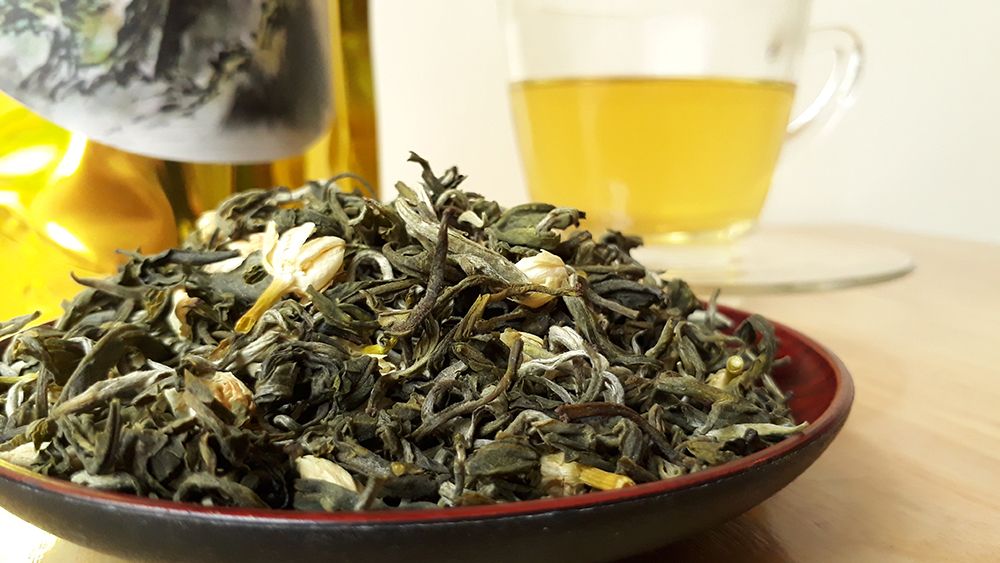
>>> Discover: Vietnamese Drinks: TOP 22+ local beverages to quench your thirst
2. How to make Vietnamese jasmine tea?
Let's explore how to make jasmine tea in the Vietnamese way, which requires a great deal of skill and finesse.
2.1. Ingredients for Vietnamese jasmine tea
To make jasmine tea, you need jasmine flowers and quality tea leaves. Jasmine flowers are usually harvested in the afternoon, selecting large buds that are ready to bloom for tea infusion. After harvesting, the flowers should be infused in the evening on the same day, as the fragrance of jasmine flowers lasts only about 10–12 hours. The base tea for infusion can be green tea, oolong tea, or Shan Snow tea, with green tea being the most commonly used for jasmine tea.
2.2. Process of making Vietnamese jasmine tea
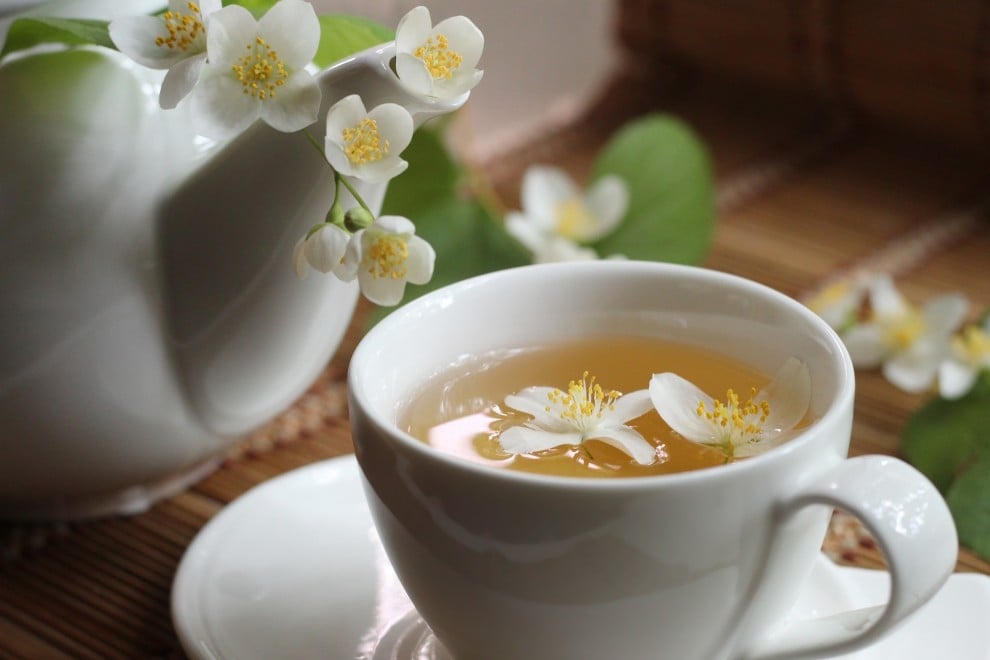
There are various methods for infusing jasmine scent into jasmine tea, but the Vietnamese traditional approach involves several steps:
- Prepare the green tea: The tea is harvested, processed, dried, and undergoes herbal fermentation to enhance fragrance absorption before jasmine infusion.
- Harvest jasmine flowers: Jasmine flowers are picked in the afternoon, carefully selecting fresh, clean buds.
- Infuse fragrance: Jasmine flowers are mixed with tea at a controlled temperature and humidity. Layer by layer, tea and flowers are infused for 20-24 hours. The infusion process can be repeated based on preference.
- Dry: Jasmine-infused tea is dried after each fragrance infusion to eliminate moisture. Jasmine flowers are removed before packaging.
>>> Explore: Traditional Vietnamese culture: A complete guide for culture travelers
3. Guide to brewing Vietnamese jasmine tea properly
Among various Vietnamese tea recipes, the Vietnamese jasmine tea recipe is simple yet yields highly anticipated results.
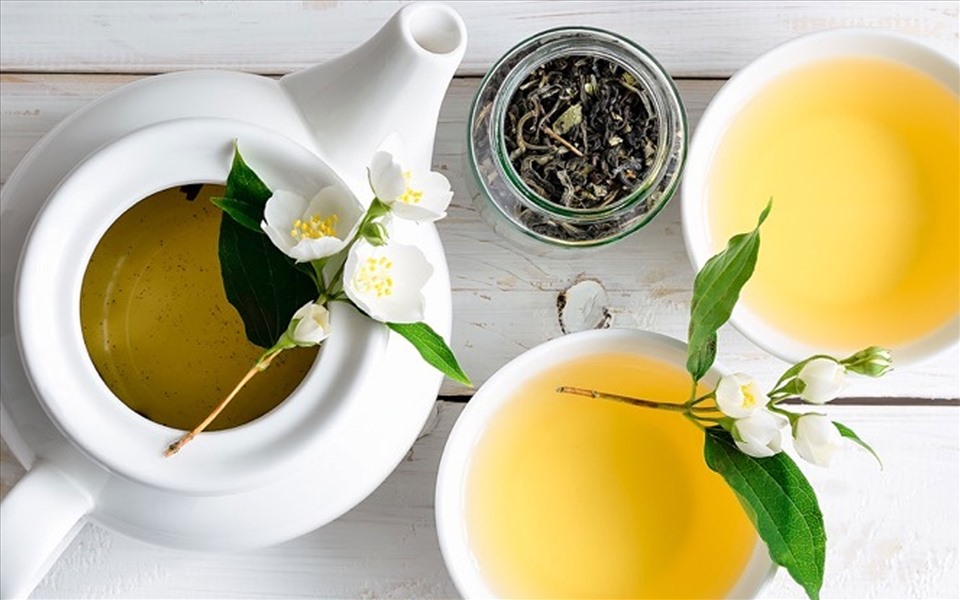
Steps to prepare hot jasmine tea:
- Add about 10 grams of tea to a 500-milliliter teapot.
- Pour in boiling water to steep the tea.
- Allow the tea to steep for approximately 4-5 minutes before enjoying it.
Recipe for cold and refreshing Vietnamese jasmine tea:
- Soak jasmine tea in cold water and refrigerate overnight. The next day, you will have chilled and fragrant jasmine tea.
- If you don’t want to wait overnight, follow the steps for making hot tea. Then, strain, let it cool, and add ice, honey, and lime for instant enjoyment.
Some notes for this Vietnamese tea recipe:
- The ideal temperature for brewing Vietnam jasmine tea is between 80-85°C to preserve the unique jasmine fragrance and prevent the tea from becoming bitter.
- Avoid rinsing jasmine tea, as this may dilute the distinctive jasmine aroma.
>>> Read more: Vietnamese Coffee: A national drink favored by international travelers
4. Tips to recognize high-quality Vietnamese jasmine tea
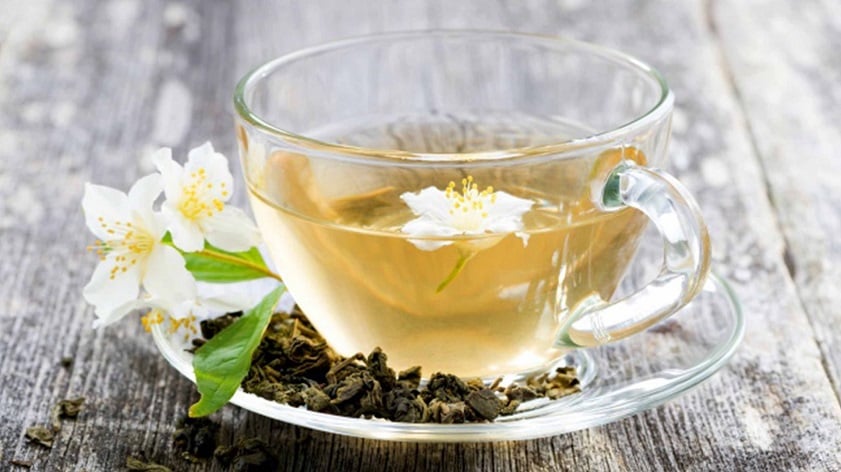
Jasmine tea makes for a thoughtful gift after a trip to Vietnam. Travelers can easily find jasmine tea in Vietnamese supermarkets or grocery stores at various destinations. Some tips for choosing fragrant and high-quality jasmine tea include:
- High-quality jasmine tea has a pleasant and natural jasmine fragrance that is not overpowering, irritating to the nose, or indicative of chemical scents.
- Uniformly colored leaves, slightly deep in hue without yellowing or discoloration, are signs of good jasmine tea. The tea leaves are often curled and even, and no flower remains or dust should be seen.
- Well-brewed jasmine tea has a honey-like yellow color, a gentle astringent taste, a sweet aftertaste, an enticing fragrance, and a lingering aroma even after multiple infusions.
>>> You should not miss: Vietnamese lotus tea: An exquisite tea that tantalizes your sense of smell
When in Vietnam, in addition to savoring Vietnamese jasmine tea, don't miss out on the captivating tourist destinations offering exquisite culinary experiences. Some prominent locations include Hanoi, Ho Chi Minh City, Phu Quoc, Nha Trang, Hoi An, and Ha Long.
During your visit, you can enhance your overall experience by indulging in the exceptional offerings of Vinpearl's hotels and resorts. Vinpearl ensures a premium stay by providing a range of amenities for relaxation, dining, and entertainment. To add excitement to your trip, head to VinWonders' entertainment complexes to enjoy various thrilling games, water activities, and cultural festivals.

>>> Book rooms in Vinpearl Phu Quoc, Vinpearl Nha Trang, Vinpearl Resort & Golf Nam Hoi An, and Vinpearl Resort & Spa Ha Long and embark on your journey to discover Vietnamese culture and cuisine
In the heart of Vietnam's tea culture lie the enchanting aroma and rich history of Vietnamese jasmine tea. A cup of Vietnam jasmine tea not only delights the senses with its fragrant blend of green tea and jasmine flowers but also encapsulates the essence of the country's time-honored tea tradition. As you take a sip, let the soothing notes of jasmine transport you to the serene landscapes and centuries-old tea heritage that make jasmine tea a truly unique and cherished experience.




